There are a lot of different types of oscilloscopes and spectrum analyzers out there, and it can be tough to decide which one is right for you. In this blog post, we’ll compare oscilloscopes and spectrum analyzers, and help you figure out which one is right for your needs.
What Is an Oscilloscope?
An oscilloscope is a tool that is used to measure electronic signals. It is a type of electronic test equipment that allows you to visualize the waveform of an electronic signal. Oscilloscopes are used in a variety of applications, such as engineering, medicine, and telecommunications.
Oscilloscopes are used to measure a variety of electronic signals, such as voltage, current, and time. They can be used to measure the amplitude, frequency, and phase of a signal. Oscilloscopes can also be used to measure the width of a pulse, or the rise and fall time of a signal.
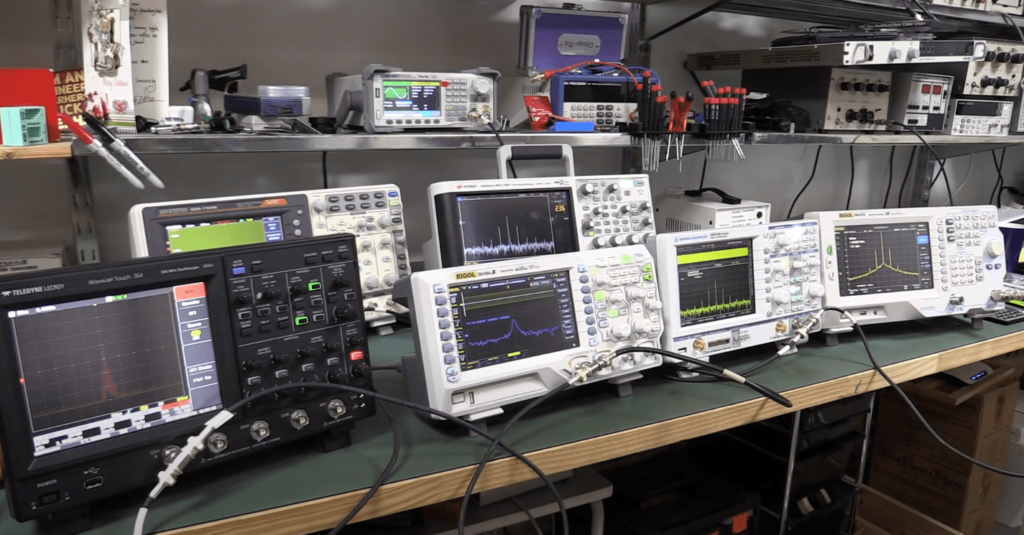
Oscilloscopes are available in a variety of sizes and configurations. They can be desktop or portable, and can be analog or digital. Oscilloscopes can be single- or multi-channel, and can have a variety of input and output connectors.
Oscilloscopes are used in a variety of applications, such as engineering, medicine, and telecommunications. In engineering, oscilloscopes are used to design, test, and debug electronic circuits. In medicine, oscilloscopes are used to diagnose heart conditions, measure brain waves, and monitor fetal heartbeats. In telecommunications, oscilloscopes are used to measure the quality of digital signals.
What Is a Spectrum Analyzer?
A spectrum analyzer is a device used to measure and analyze the strength and frequency of a signal. The most common type of spectrum analyzer is a swept-tuned analyzer, which uses a tunable filter to sweep through a range of frequencies and measure the strength of the signal at each frequency.
Swept-tuned spectrum analyzers are typically used to measure the strength of a signal over a wide frequency range, such as the entire electromagnetic spectrum. They are also used to measure the frequency response of a system, such as an antenna or a cable.
Spectrum analyzers are used in a variety of applications, including radio and television broadcasting, telecommunications, aerospace, and defense. They are also used in scientific research, such as studying the effects of electromagnetic radiation on human health.
Differences Between Oscilloscopes and Spectrum Analyzers
Both of these devices are essential for engineers and technicians working with electronics. But what’s the difference between these two types of measurement devices?
An oscilloscope is an instrument that measures voltage over time. That is, it takes a voltage signal and displays it on a screen as a function of time. Oscilloscopes are typically used to measure the behavior of electronic circuits, to troubleshoot problems, or to design new circuits.
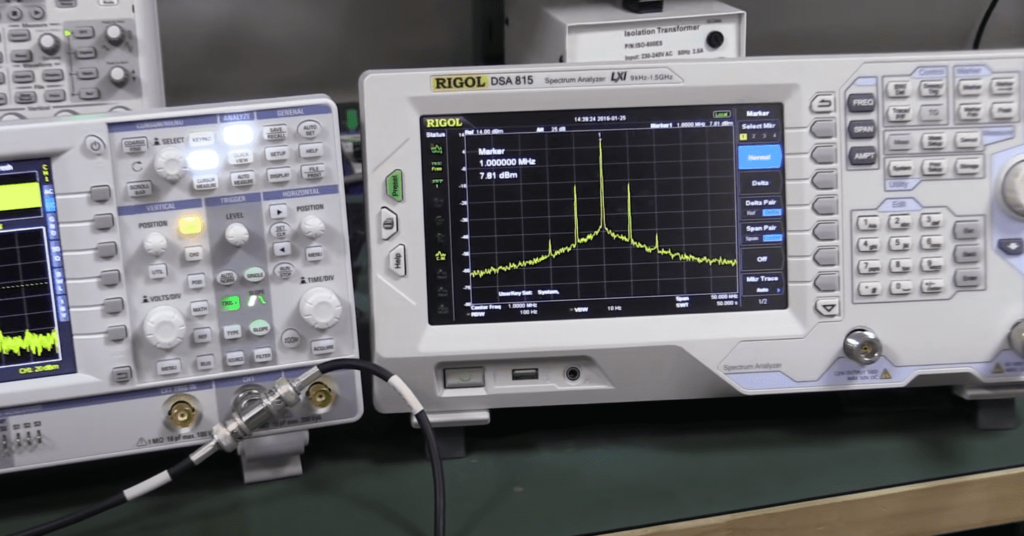
A spectrum analyzer, on the other hand, measures the frequency content of a signal. That is, it takes a signal and displays its amplitude (strength) as a function of frequency. Spectrum analyzers are typically used to measure the frequency response of electronic circuits, to troubleshoot problems, or to design new circuits.
So, what’s the difference between an oscilloscope and a spectrum analyzer? Here are a few key points:
- An oscilloscope measures voltage over time, while a spectrum analyzer measures the frequency content of a signal.
- Oscilloscopes are typically used to measure the behavior of electronic circuits, while spectrum analyzers are typically used to measure the frequency response of electronic circuits.
- Oscilloscopes can be used to troubleshoot problems or to design new circuits, while spectrum analyzers are mainly used to troubleshoot problems.
Which Tool is Better for You?
Both are incredibly useful for a variety of applications, but which one is the right choice for you?
Let’s take a look at each tool to see what they’re best used for.
Oscilloscopes are excellent for measuring voltage over time. This makes them ideal for looking at electrical signals to see how they change over time. They can also be used to measure the frequency of a signal, making them ideal for troubleshooting audio or video issues.
Spectrum analyzers are best used for measuring the strength of a signal over a range of frequencies. This makes them ideal for identifying interference in a signal or for looking at the components of a complex signal.
So, which tool is the right choice for you? It really depends on what you’re looking to measure. If you need to measure voltage over time, an oscilloscope is the way to go. If you need to measure the strength of a signal over a range of frequencies, a spectrum analyzer is the better choice.
FAQ
What are advantages of spectrum analyzer over oscilloscope?
There are many advantages of using a spectrum analyzer over an oscilloscope. One advantage is that a spectrum analyzer can provide a wider frequency range of analysis. Additionally, spectrum analyzers can provide more accurate measurements of amplitude and phase. Finally, spectrum analyzers can be used to identify and isolate harmonics, which can be difficult to do with an oscilloscope.
What is the difference between FFT and spectrum analyzer?
There are a few key differences between FFT and spectrum analyzers. The main difference is that FFT is a mathematical process that converts a signal from the time domain into the frequency domain, while spectrum analyzers are physical devices that measure the amplitude of a signal at various frequencies.
Another key difference is that FFT can be used to analyze signals that are not periodic, while spectrum analyzers are only able to analyze periodic signals.
Finally, FFT is typically much faster than spectrum analyzers, making it the preferred choice for many applications.
Why do you need a spectrum analyzer?
There are many reasons why you might need a spectrum analyzer. For example, you might need to measure the strength of a signal, or to identify the frequency components of a signal. Spectrum analyzers can also be used to troubleshoot problems with electronic equipment.
Why do you need an oscilloscope?
Oscilloscopes are used to measure electrical signals. They are used to measure the voltage of an electrical signal over time. Oscilloscopes can be used to measure the frequency of an electrical signal, the amplitude of an electrical signal, and the phase of an electrical signal.
Does a spectrum analyzer use FFT?
Yes, a spectrum analyzer does use FFT to analyze the spectral content of a signal.
is Rigol DS1054Z a good oscilloscope?
There is no simple answer to this question as it depends on what you need and expect from an oscilloscope. The Rigol DS1054Z is a good entry-level oscilloscope that offers many features and capabilities. However, it may not be the best choice for everyone.
is Siglent SDS1202X-E a good oscilloscope?
Yes, the Siglent SDS1202X-E is an excellent oscilloscope. It has a great feature set and is very user-friendly. I highly recommend it!
Related Video: Spectrum Analyzers and Oscilloscopes
Summing Up
It is evident that both oscilloscopes and spectrum analyzers have their own unique set of pros and cons. When choosing between the two, one must consider what specific features are most important for the task at hand. For general purposes, an oscilloscope may be the better choice due to its lower cost and simpler design. However, for more precise applications, a spectrum analyzer would be the better investment.

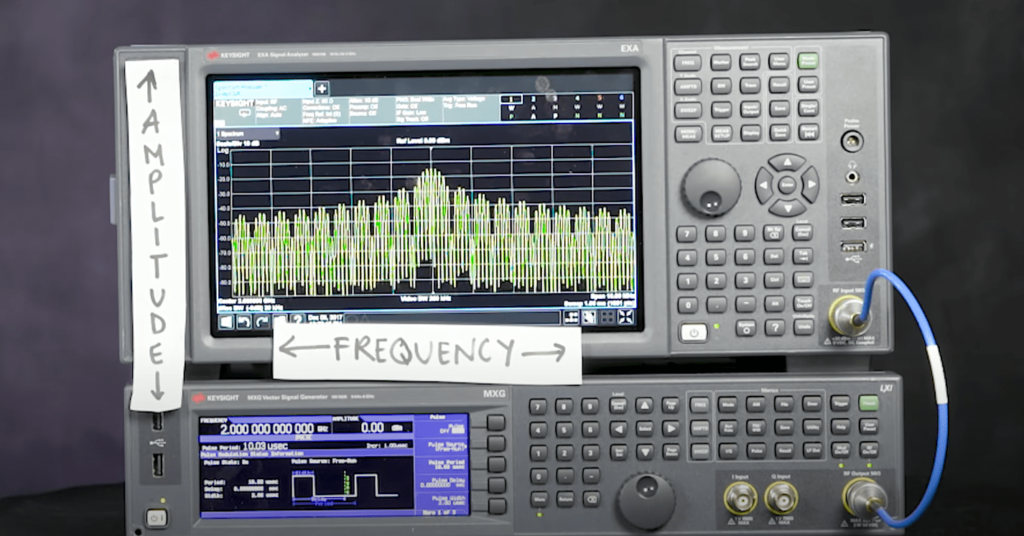

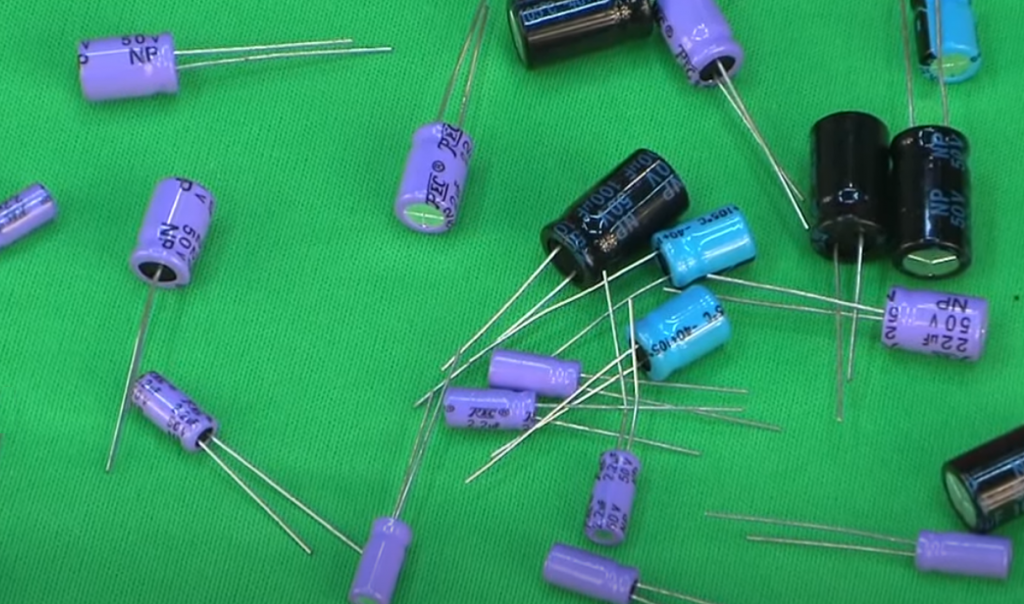
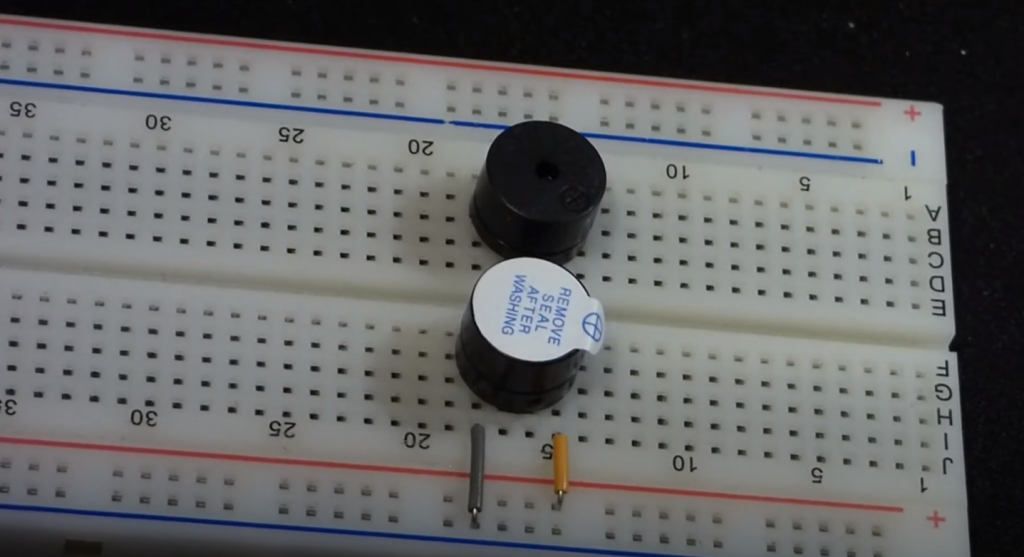
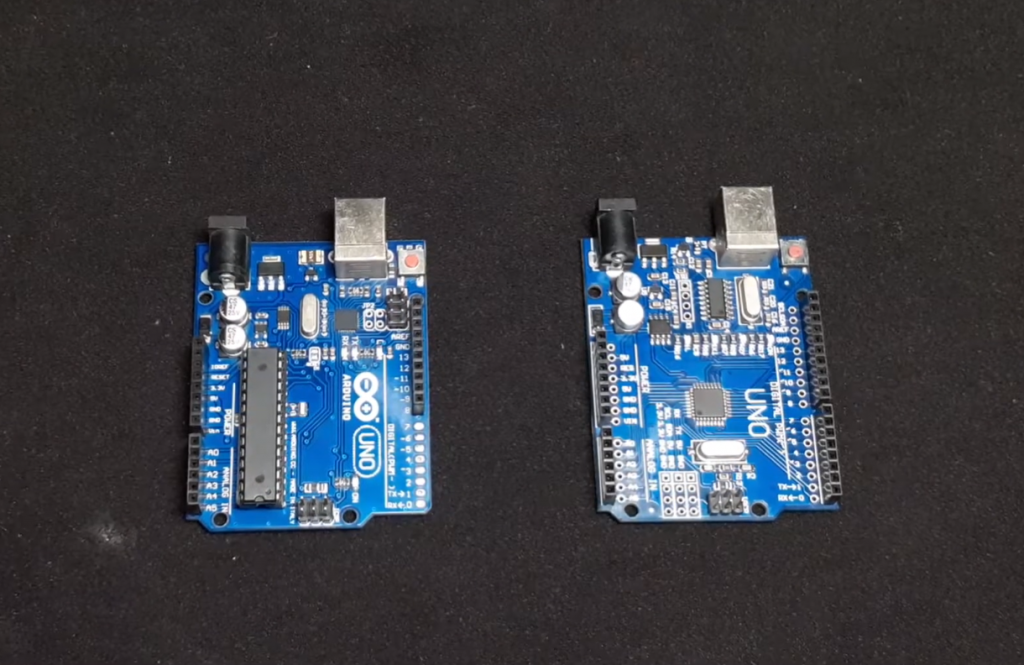
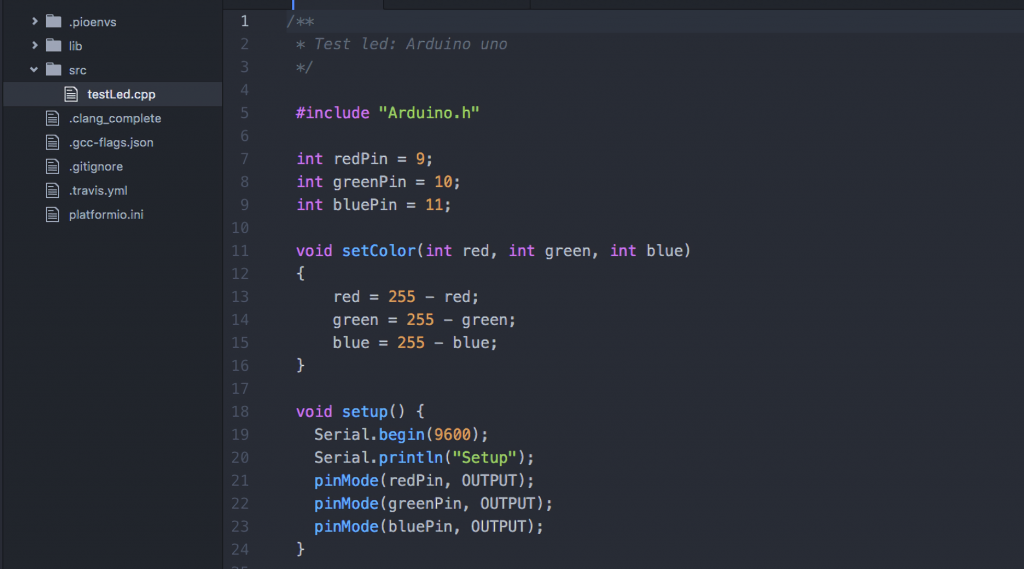
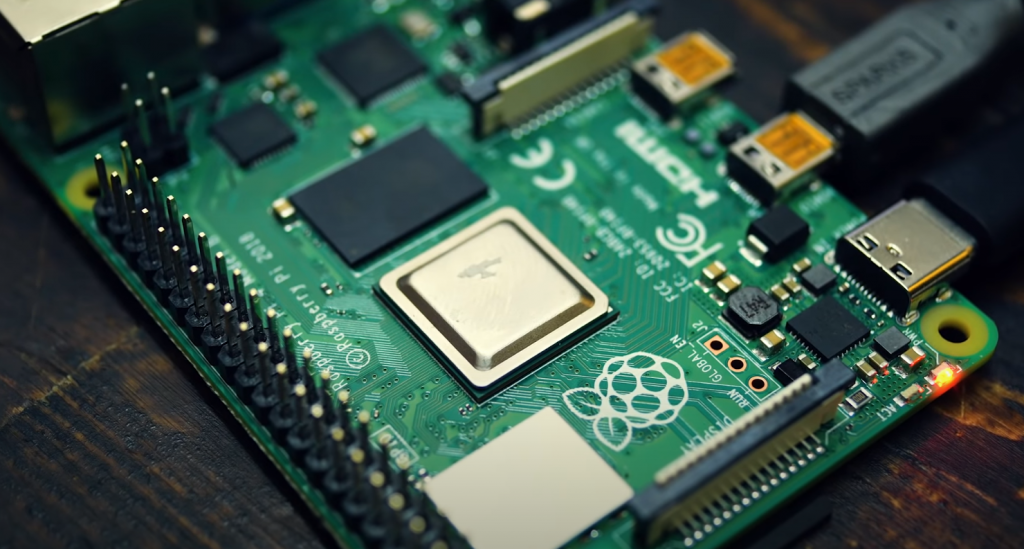
I’ve been using a spectrum analyzer for about two years now and I absolutely love it. I find that it’s much more accurate than an oscilloscope, and it’s also easier to use. I highly recommend it for anyone who is looking for a great way to measure signal strength.